Zucchini plants thrive in heat, but can suffer from blistering sun much like other summer vegetables. And with high heat usually come diseases, which make already disease-prone summer squash even more vulnerable.
For this reason, gardeners who live in hot climates should specifically look for disease-resistant zucchini. Below are some of the best heat tolerant and disease resistant zucchini varieties, including two varieties (Partenon and Aehobak) with unique characteristics that make them also good options for hot climates.
| Zucchini Variety | Disease Resistances | Additional Notes |
|---|---|---|
| Dunja | PM, PRSV, WMV, ZYMV | Excellent performer in high heat |
| Desert | CMV, PM, PRSV, WMV, ZYMV | Excellent for both humid and dry heat |
| Spineless Perfection | PM, WMV, ZYMV | Spineless plants |
| Partenon | PM | Parthenocarpic (sets fruit without pollination) and drought tolerant; resistant to cucumber beetles |
| Golden Glory | PM, WMV, ZYMV | Yellow zucchini |
| Aehobak (Korean Zucchini) | *Naturally more disease resistant than true zucchini varieties | Not a true zucchini (C. pepo); C. moschata species |
| Emerald Delight | PM, WMV 2, ZYMV | Mini zucchini |
Disease acronyms: PM (Powdery Mildew); CMV (Cucumber Mosaic Virus), WMV (Watermelon Mosaic Virus); PRSV (Papaya Ringspot Virus); ZYMV (Zucchini Yellow Mosaic Virus); numbers refer to specific races (strains) of those diseases.
Note to international readers: Many of the US-based seed companies mentioned in this article also ship internationally.
On this page:
Heat and Disease-Tolerant Zucchini Varieties
Dunja
Early, reliable workhorse zucchini with resistance to numerous squash diseases
Days to Maturity: 45 to 47 days
Fruit Description: Dark green and glossy, 6 to 8 inches, straight
Plant Description: Compact, bushy vine, short spines
Disease Resistance: PM, PRSV, WMV, ZYMV
Open Pollinated? No (Hybrid)
Get seeds: Johnny’s Selected Seeds (US), High Mowing Organic Seeds (US), Harris Seeds (US), Stokes Seeds (US), William Dam Seeds (Canada), Thompson & Morgan (UK)
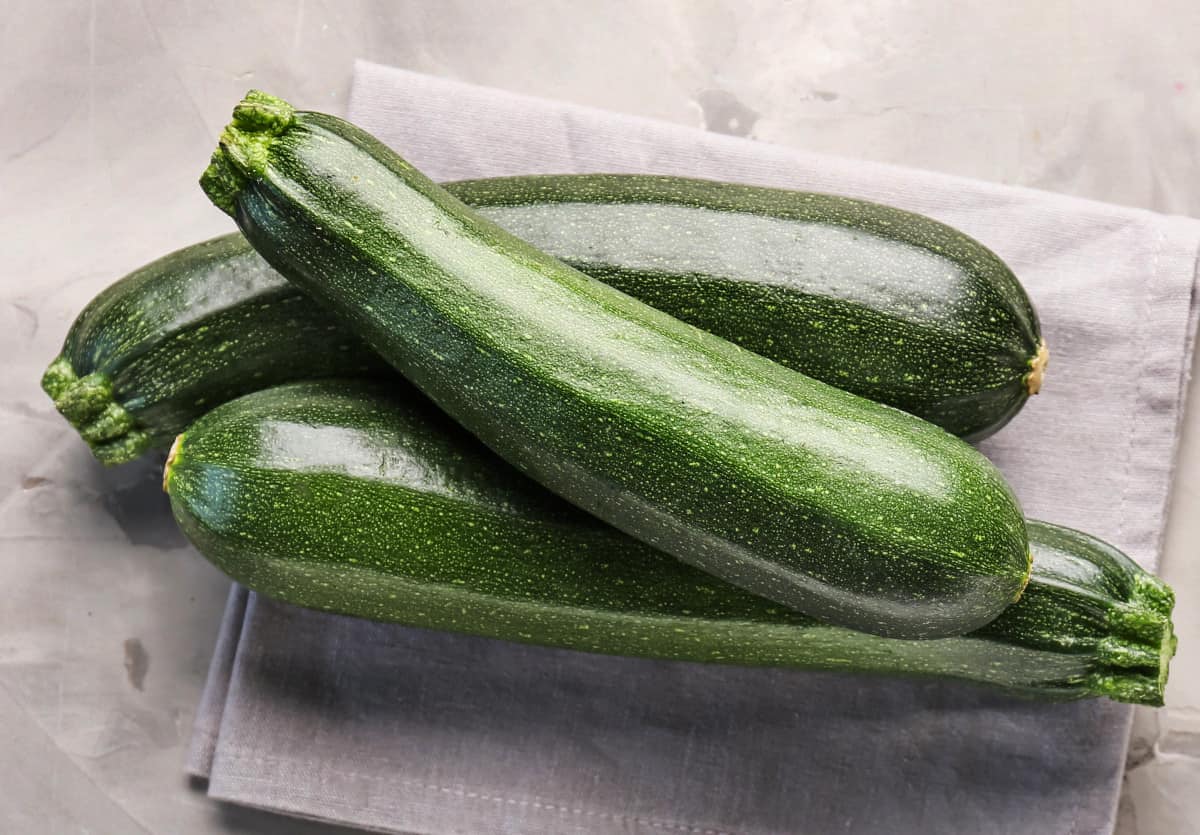
A reliable, productive variety, Dunja is often the first choice for gardeners looking for a variety that can survive weeks after most zucchini plants succumb to disease. This variety even outperforms other popular market varieties like Payroll in both yield and disease resistance.
Dunja produces continuous flushes of relatively uniform, straight, dark green glossy fruits on a . It’s usually picked at 7 to 8 inches, but you can pick them when slightly smaller for more tender zucchini. While not spineless, short spines make harvesting much easier. Highly recommended.
Desert
One of the most disease-resistant zucchini varieties with consistent yields of dark, glossy fruits in high heat
Days to Maturity: 47 to 50 days
Fruit Description: Very dark green with light speckles, 7 to 8 inches, uniform
Plant Description: Compact, bushy vine, short spines
Disease Resistance: CMV, PM, PRSV, WMV, ZYMV
Open Pollinated? No (Hybrid)
Get seeds: High Mowing Organic Seeds (US), Johnny’s Selected Seeds (US), Territorial Seed Company (US), Whitwam Organics (US), Osborne Quality Seeds (US), West Coast Seeds (Canada)
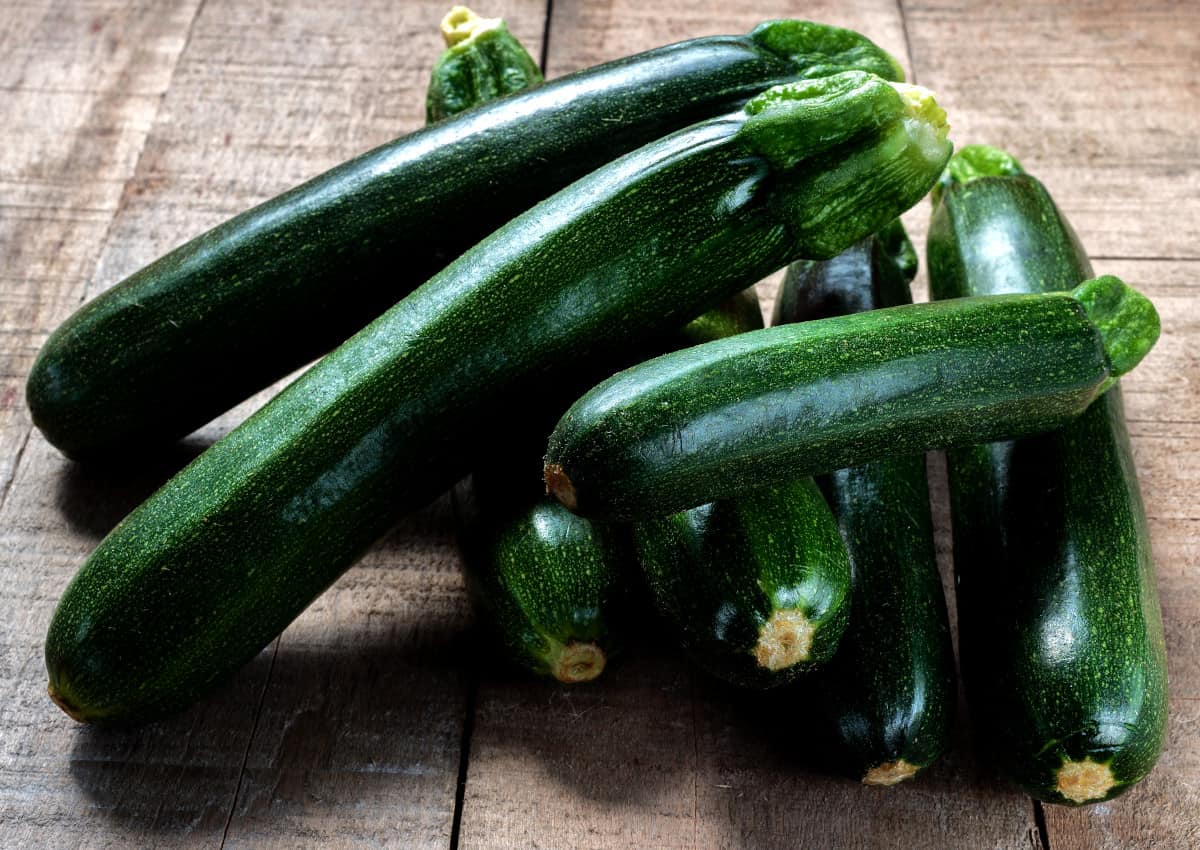
Related to Dunja, Desert is one of the most disease resistant zucchini varieties you can grow. Not only does it have all the disease resistance of Dunja, it has added CMV resistance as well. It also has good drought tolerance, making it excellent for both the dry heat of the Southwest and the humidity of the Deep South. Desert also tends to keep its blossoms open longer than most zucchini varieties, allowing more time for pollination. The result is a superbly resilient, productive variety that can thrive in a variety of conditions.
Desert zucchini plants are compact and very productive, producing very uniform, straight, dark green (almost black) zucchini with faint light speckling. Highly recommended.
Spineless Perfection
An improved version of the Spineless Beauty, the same pain-free harvesting but with additional disease resistance
Days to Maturity: 40 to 47 days
Fruit Description: 4 to 8 inches long, medium dark green, very glossy, cylindrical fruits
Plant Description: Spineless, open growth habit for easier, pain-free harvesting
Disease Resistance: PM, WMV, ZYMV
Open Pollinated? No (Hybrid)
Get seeds: Park Seed (US), Johnny’s Selected Seeds (US), Harris Seeds (US), Seedway (US), Stokes Seeds (US), Stokes Seeds (Canada), T&T Seeds (Canada)
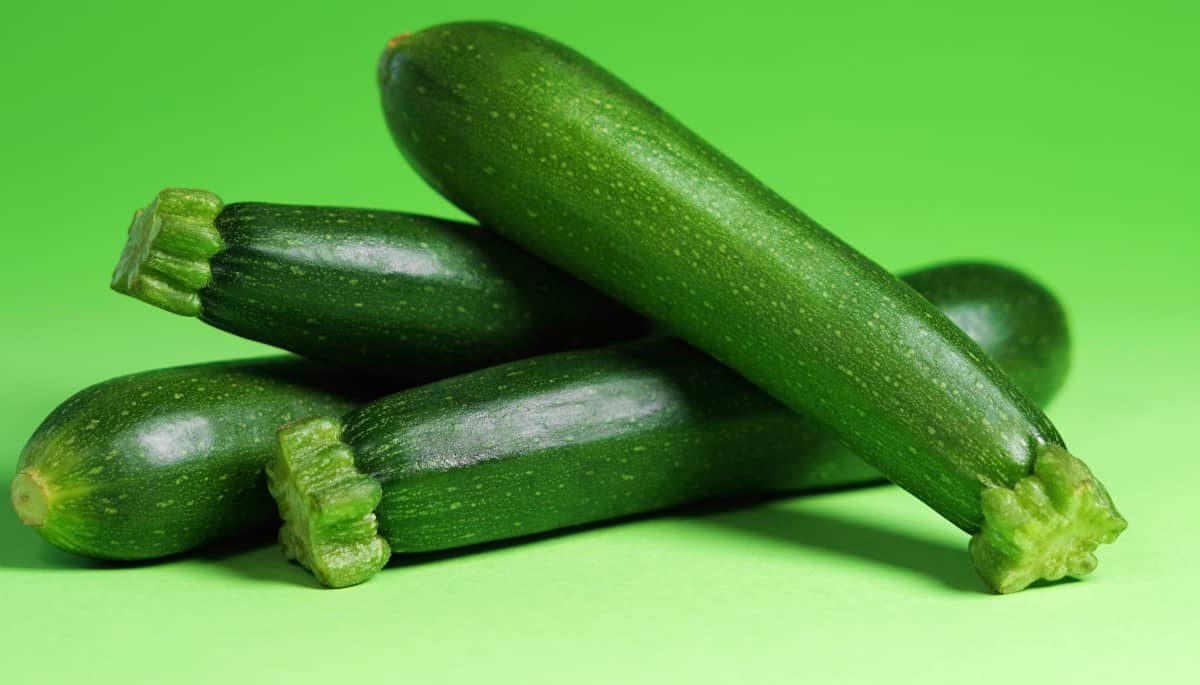
Spineless Perfection is another disease-resistant variety for hot climates, but this one was bred to have no spines. This variety is similar to another spineless zucchini called Spineless Beauty, but with additional disease resistance.
This improved green zucchini is a prolific producer, with a long season of high-yielding plants with an open growth habit, making it easier to harvest. While not the most recommended on this list for hot climates, it is the only zucchini variety that has both spineless plants and good disease resistance.
Partenon
Highly productive zucchini that can produce fruits in high heat without pollination
Days to Maturity: 45 to 55 days
Fruit Description: Medium green, 4 to 7 inches long, uniform shape
Plant Description: Bushy vine, compact, short spines
Disease Resistance: PM
Open Pollinated? No (hybrid)
Get seeds: Johnny’s Selected Seeds (US), We Seeds (US), Park Seed (US), William Dam Seeds (Canada), Chiltern Seeds (UK), Thompson & Morgan (UK)
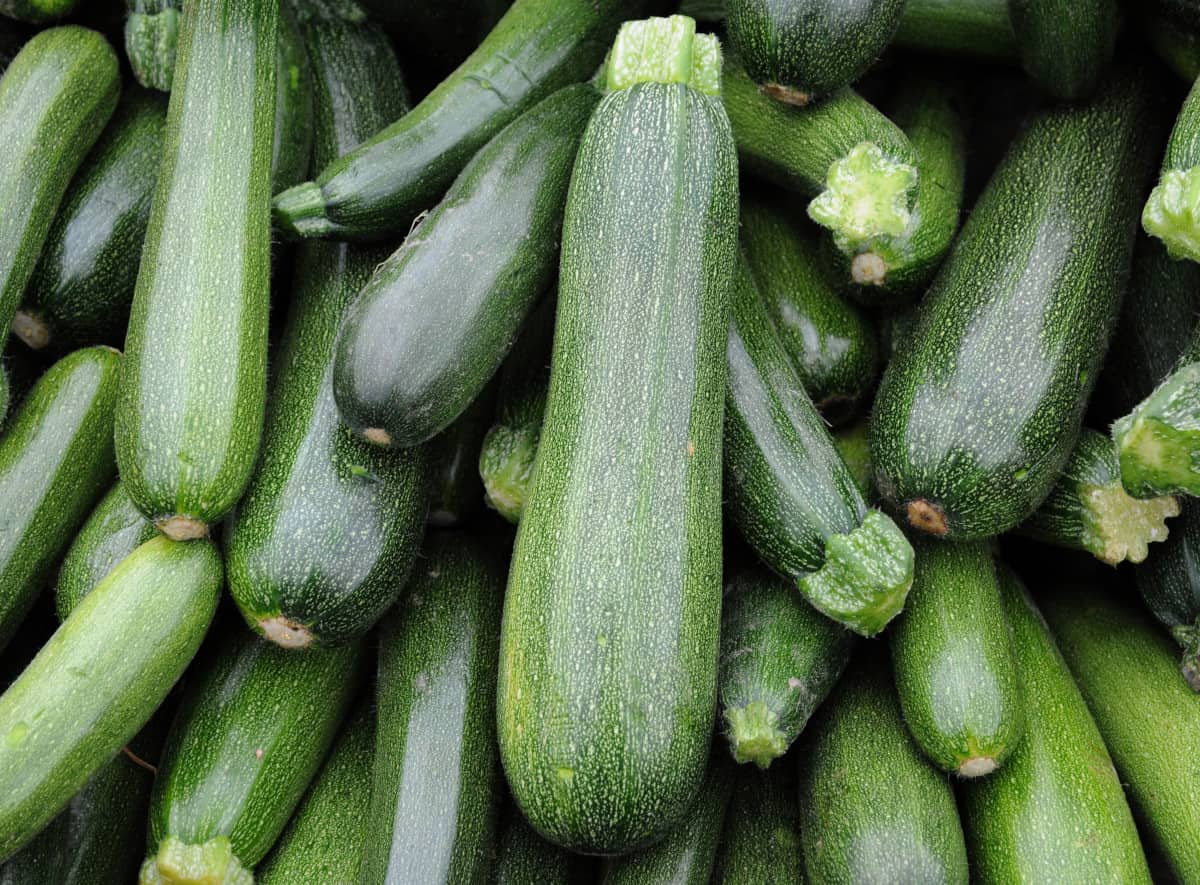
High heat can sometimes affect yield directly by reducing pollination, either by lowering the number of pollinators in your garden, or by overheating the pollen itself to reduce its viability. Partenon (sometimes sold as “Parthenon”) is a parthenocarpic zucchini, meaning it can actually set fruit without pollination. This makes it not only good for greenhouse or high tunnel growing, but also for extremely hot climates.
In addition to being parthenocarpic, Partenon is also resistant to powdery mildew, cucumber beetles, and boasts drought tolerance as well. However, they do require regular watering to ensure development of uniform fruit. The fruit themselves are medium green and fairly uniform, growing on compact, bushy plants with short spines. Overall, this is a great variety for market production and home growing. Highly recommended.
Golden Glory
Prolific lemon-yellow zucchini variety with excellent disease resistance and good pest resistance
Days to Maturity: 50 days
Fruit Description: Bright yellow, blemish-free fruits, around 6 to 8 inches
Plant Description: Bushy, open growth habit, with
Disease Resistance: PM, WMV, ZYMV
Open Pollinated? No (Hybrid)
Get seeds: Johnny’s Selected Seeds (US), True Leaf Market (US), Jung Seed Company (US), Pinetree Garden Seeds (US), T&T Seeds (Canada)
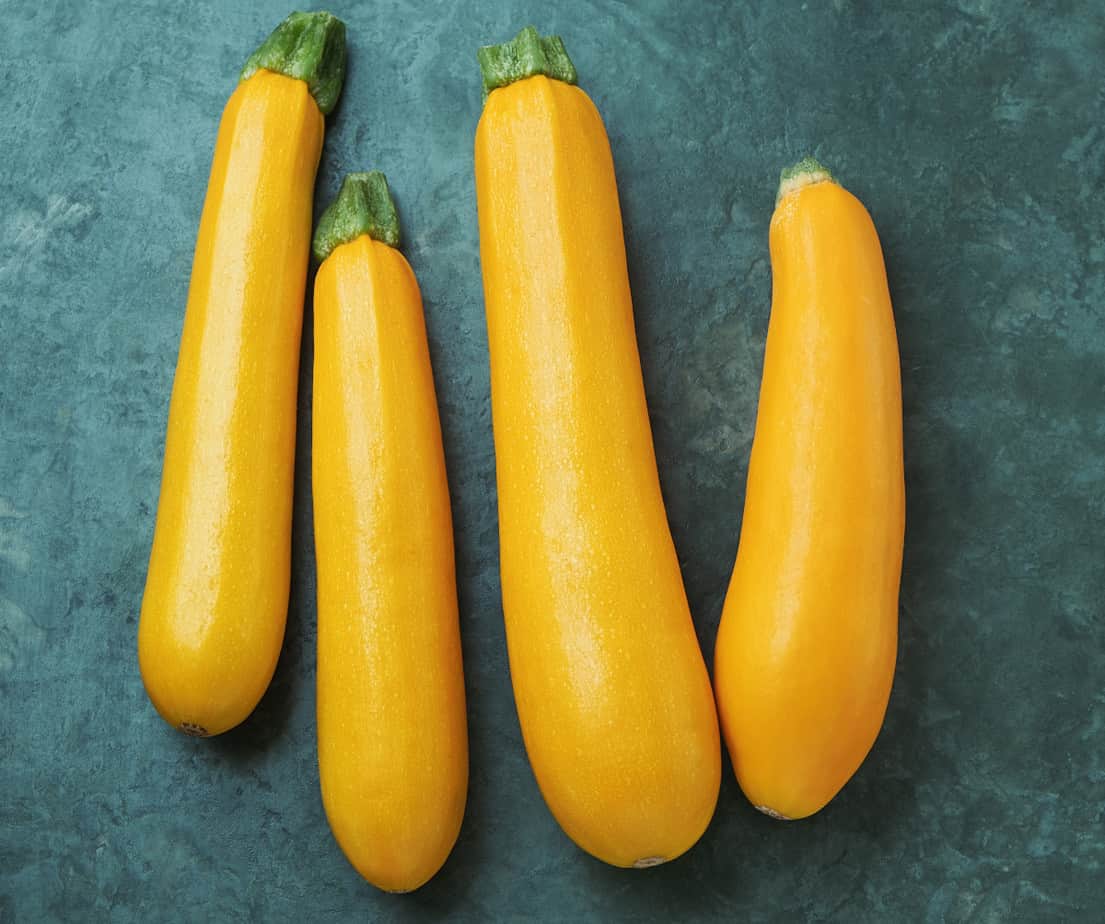
Among yellow zucchini varieties, Golden Glory is known for its consistent high yields and resistance to multiple diseases. It also seems to attract fewer pests than other varieties. This variety itself is an improved version of the popular Golden Delight zucchini.
Golden Glory zucchini are uniform in shape, bright yellow, and free of blemishes, making them perfect for market growers as well as home gardeners. They also have a similar taste to green zucchini, although many claim that yellow zucchinis have a slightly sweeter taste.
Aehobak (Korean Zucchini)
A different species of squash that makes for a great zucchini alternative in hot and humid climates
Days to Maturity: 55 to 75 days
Fruit Description: Varies from light green to slightly dark green depending on the variety; often picked at 5 to 8 inches long
Plant Description: Vining or semi-bush growth habit like many winter squash
Disease Resistance: (no specific resistances but naturally less susceptible to disease than true zucchini)
Open Pollinated? Yes
Get seeds: Open-pollinated ‘Aehobak’: Whitwam Organics (US), Kimchimari Shop (US); ‘King Ka Ae’ hybrid: Kitazawa Seed Co. (US)
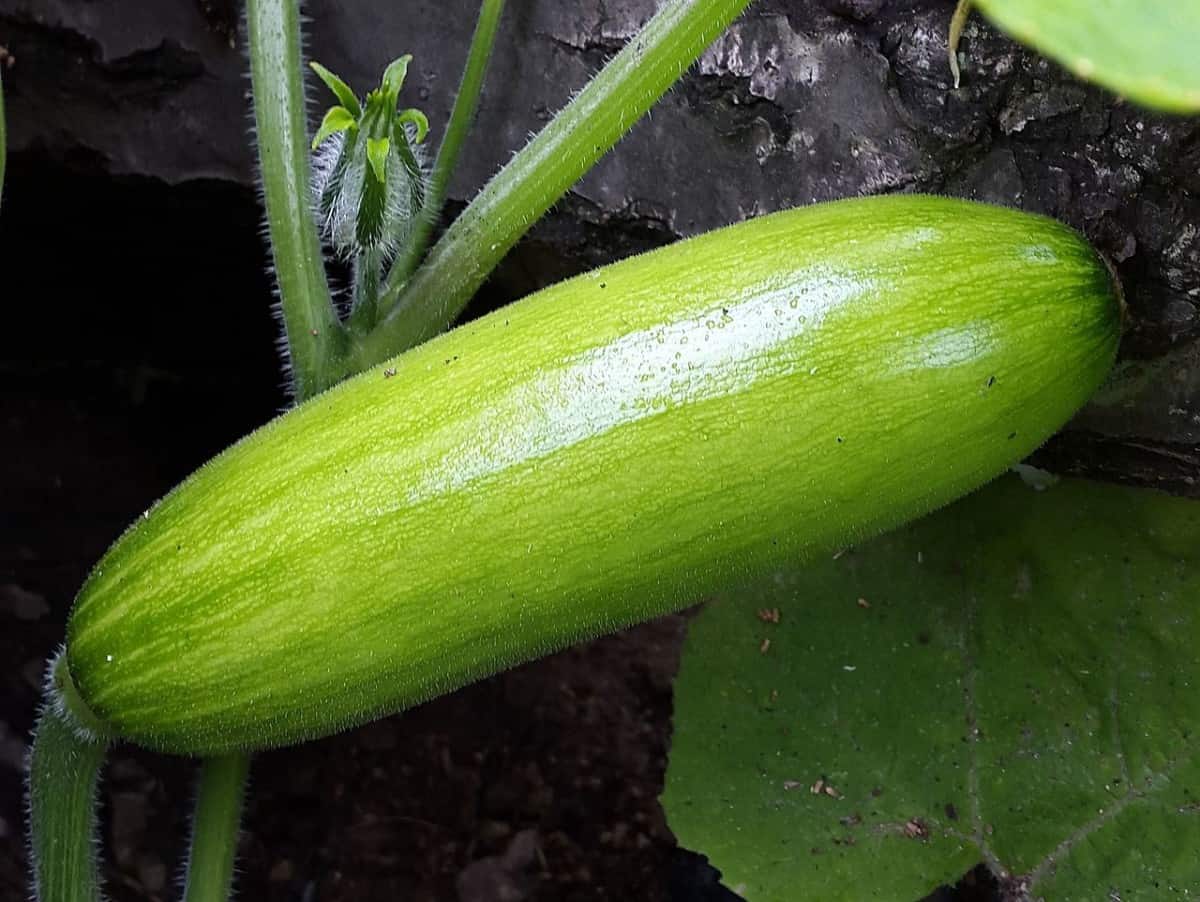
Aehobak is a squash variety that looks and tastes like a zucchini (Cucurbita pepo) but is actually a variety of a completely different squash species, Cucurbita moschata, which makes it more closely related to butternut squash and Seminole pumpkins. There are a few varieties of Korean zucchini but they all share the same succulent, tender skin and delicate zucchini flavor.
C. moschata squash like the Korean zucchini typically last longer before succumbing to disease compared to true zucchini and other summer squash. Some of its cousins, like the Seminole pumpkin, are renowned for their high heat tolerance. If you live in a hot and humid climate like Southern Florida, planting Korean zucchini can really extend your zucchini growing season. Highly recommended.
Emerald Delight
For mini zucchini lovers: a compact, disease resistant, early bush variety with prolific yields
Days to Maturity: 50 to 55 days
Fruit Description: 6 to 8 inches, but best picked at 3-5 inches for optimal flavor and texture, dark green, uniform shape
Plant Description: Compact bush, open growth habit for easier harvesting
Disease Resistance: PM, WMV 2, ZYMV
Open Pollinated? No (Hybrid)
Get seeds: Territorial Seed Company (US), Hirt’s Gardens (US), Botanical Interests (US)
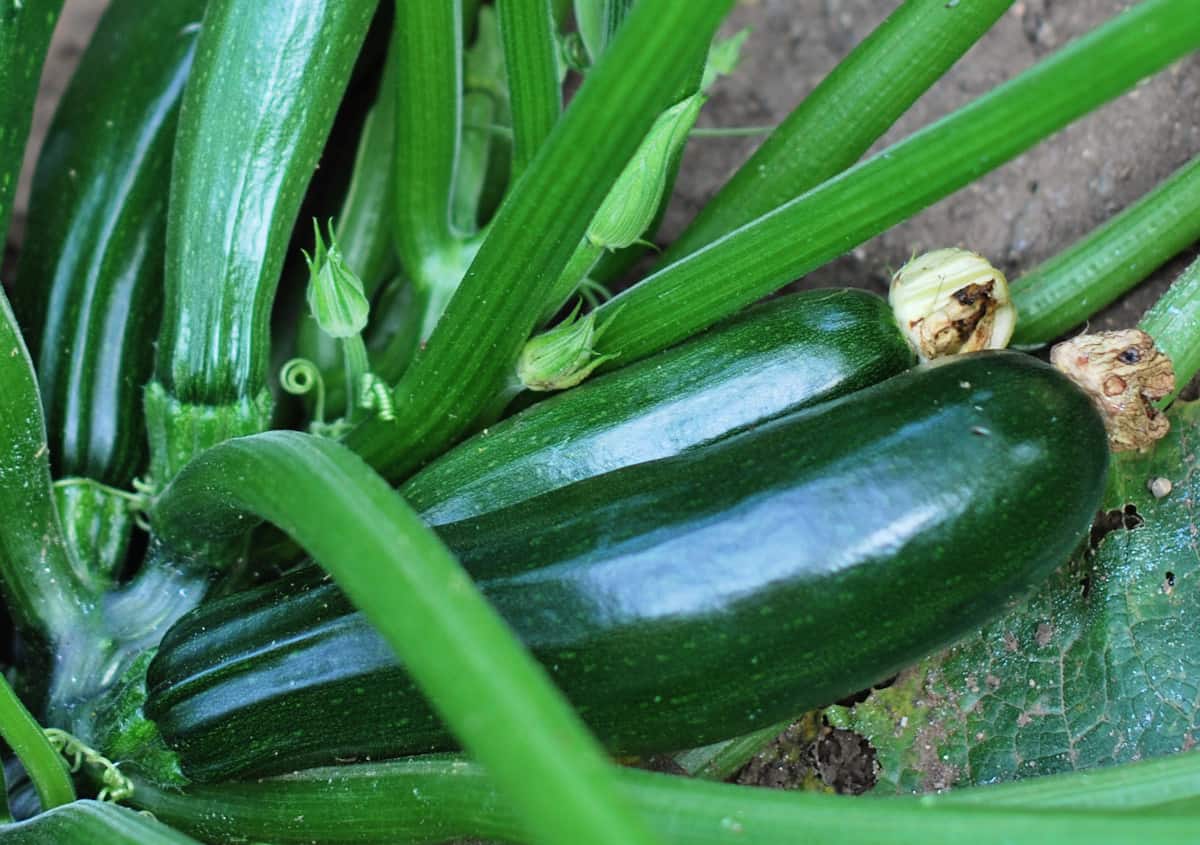
Emerald Delight is a prolific, highly disease-resistant variety of zucchini which grows on compact, upright bushes. The fruit are dark green, getting darker as they mature.
This variety makes the list not only for its multiple disease resistances, but also the fact that while it does get to a normal zucchini size, 6 to 8 inches, it tastes best when picked small, around 3 to 5 inches. The flavor is more delicate and the texture is more tender. Try grilling the small ones whole!
Other Recommended Zucchini Varieties
- Black Beauty
- Cocozelle
- Cavili (Parthenocarpic)
- Tromboncino
- Yellowfin
Keeping Your Zucchini Plants Thriving in High Heat (Tips)
Once your heat-tolerant zucchini are already in the ground, there are things you can do to help keep your zucchini plants alive longer.
- Keep your zucchini well-watered, especially during times of extreme heat. Reducing heat stress will not only keep your plants thriving, but also support more blooms well into summer.
- Avoid getting water on zucchini leaves. Excess moisture on the leaves is a breeding ground for diseases. You can also consider staking up your zucchini to keep the leaves off the ground.
- Prune older, yellow leaves and any leaves with powdery mildew spots. You can’t completely stop powdery mildew, but you can slow it down by planting disease resistant varieties and pruning away any diseased leaves the moment you see the first signs of the disease. Note that many zucchini varieties have natural light patterning on their leaves which can be mistaken for powdery mildew; powdery mildew looks like very soft, irregular, round powdery spots on both the leaves and stems.
- Consider using shade cloth. Shade cloth is specifically made to block a percentage of sunlight, reducing overall heat stress on your plants. Ideal for heat waves or high heat climates in the Deep South or Southwest.
Which Variety Should You Grow? (Summary)
For most zucchini varieties, high temperatures alone aren’t usually the problem, but rather the proliferation of diseases during hot and humid summers. All the above varieties will do well in high heat, but for the highest disease resistance, Dunja and especially Desert are the most recommended. Desert in particular has more disease resistances and tolerates both dry and humid conditions.
If you’re growing in a greenhouse or if searing high heat is affecting pollination (either by reducing pollinator activity or by reducing pollen viability) the best choice on this list is Partenon, which is parthenocarpic, requiring no pollination, and has good powdery mildew and cucumber beetle resistance.
For gardeners who always struggle with summer squash but usually don’t have as much of a problem with C. moschata varieties like Butternut squash or Seminole pumpkins, try a close cousin that resembles a zucchini in size, shape, and taste, Aehobak (Korean zucchini).
